
20.04.2023
The exhibition is open through May 7, 2023
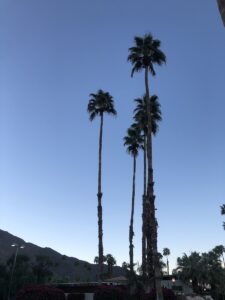 The desert, with its endless expanse of sand and rock, has long been a source of inspiration. Its stark beauty, relentless heat, and unforgiving terrain make it a place of both danger and wonder. It is in this landscape that the city of Palm Springs arises as a mirage: an enormous palm-tree garden in the middle of the desert, a heterotopia of sorts located in an unlikely scenario, capable of stopping being an illusion and becoming an oasis.
The desert, with its endless expanse of sand and rock, has long been a source of inspiration. Its stark beauty, relentless heat, and unforgiving terrain make it a place of both danger and wonder. It is in this landscape that the city of Palm Springs arises as a mirage: an enormous palm-tree garden in the middle of the desert, a heterotopia of sorts located in an unlikely scenario, capable of stopping being an illusion and becoming an oasis.
Within this fragile, magnificent yet challenging setting, the installations of Desert X 2023—the biennial exhibition, known for showcasing site-specific installations—provides a unique perspective on the desert landscape, to explore a range of social, political, and environmental themes. Curated by Artistic Director Neville Wakefield and Co-Curator Diana Campbell, it features 12 installations across the Coachella Valley that take on a new meaning, bringing attention to the fragility of the natural world, the urgency of the climate crisis, and the ongoing struggles of marginalized communities. The works seem to wonder how to navigate, design and live in a world increasingly shaped by climate crisis and migrations crisis from a poetic, critical, decolonial and reflexive perspective.
One of the main statements made by the curators for this edition—and what they considered to traverse all works—was the notion of making visible the invisible. Through this thought the biennale is able to speak about poetic elements of the desert such as a particle of salt, the heart of a whale, the relationship between water and desert, but also about immigrants, ancestral knowledge and other forms of invisibilization.
Hylozoic/Desires’ Namak Nasar is a thought-provoking and impactful work that addresses issues of climate change and environmental conservation. The installation, situated in the middle of the desert, consists of a series of speakers playing announcements of a new conspiracy theory. Inspired by the proliferation of statements from UFOlogists, Scientologists, Cybernetic Spiritualists, Area 51, Flatearthers, Lizard people and Chemtrails, the speakers chant an imaginary about Namak Nazar, a particle of salt that spells the doom of climate change and offers redemption by looking inward. The poem takes the form of an anthem that for moments would seem like a prayer. Because as the collective reminds us: “How beautiful is it to chant something in the middle of the desert?”
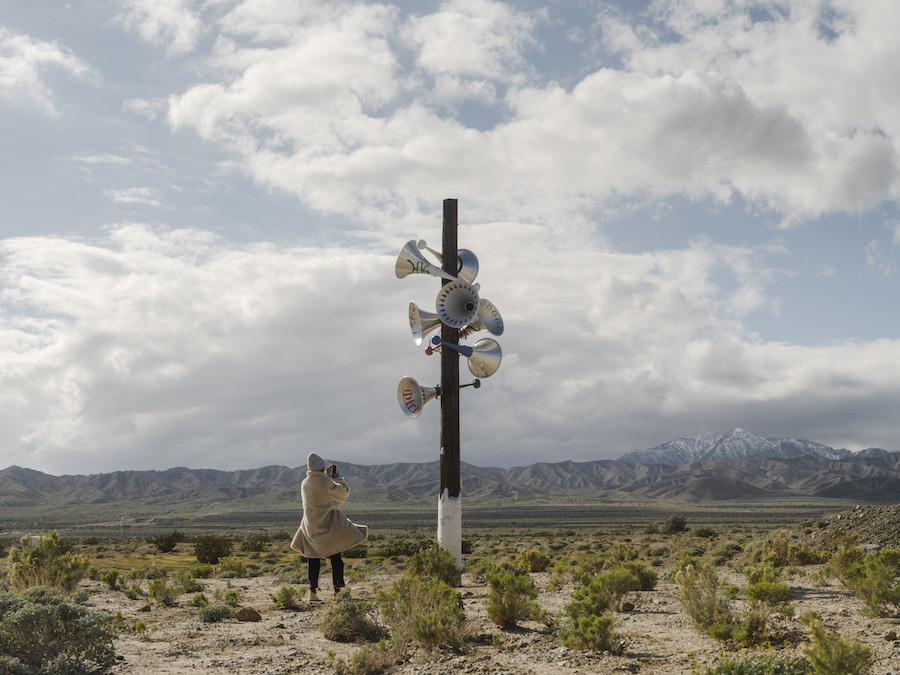
Hector Zamora’s take on the invisibilization, is a more political one. Chimera is as much an homage to the street venders as a poetic gesture where silver balloons with different words such as sun, soon, dew, rescue, mirror, dried float around the city. The balloons, carried by the walking vendors, are for sale in different locations of Palm Springs. Zamora’s intention is to make visible an often invisible figure within the landscape occupied mostly by immigrants and people who recur to the informal economies. His performance also delves into these other possibilities within the economic market, where prices can be discussed orally, there is space for bargain and one-on-one negotiations. With his action he reinvents the public sphere as well as the position of the vendors in it.
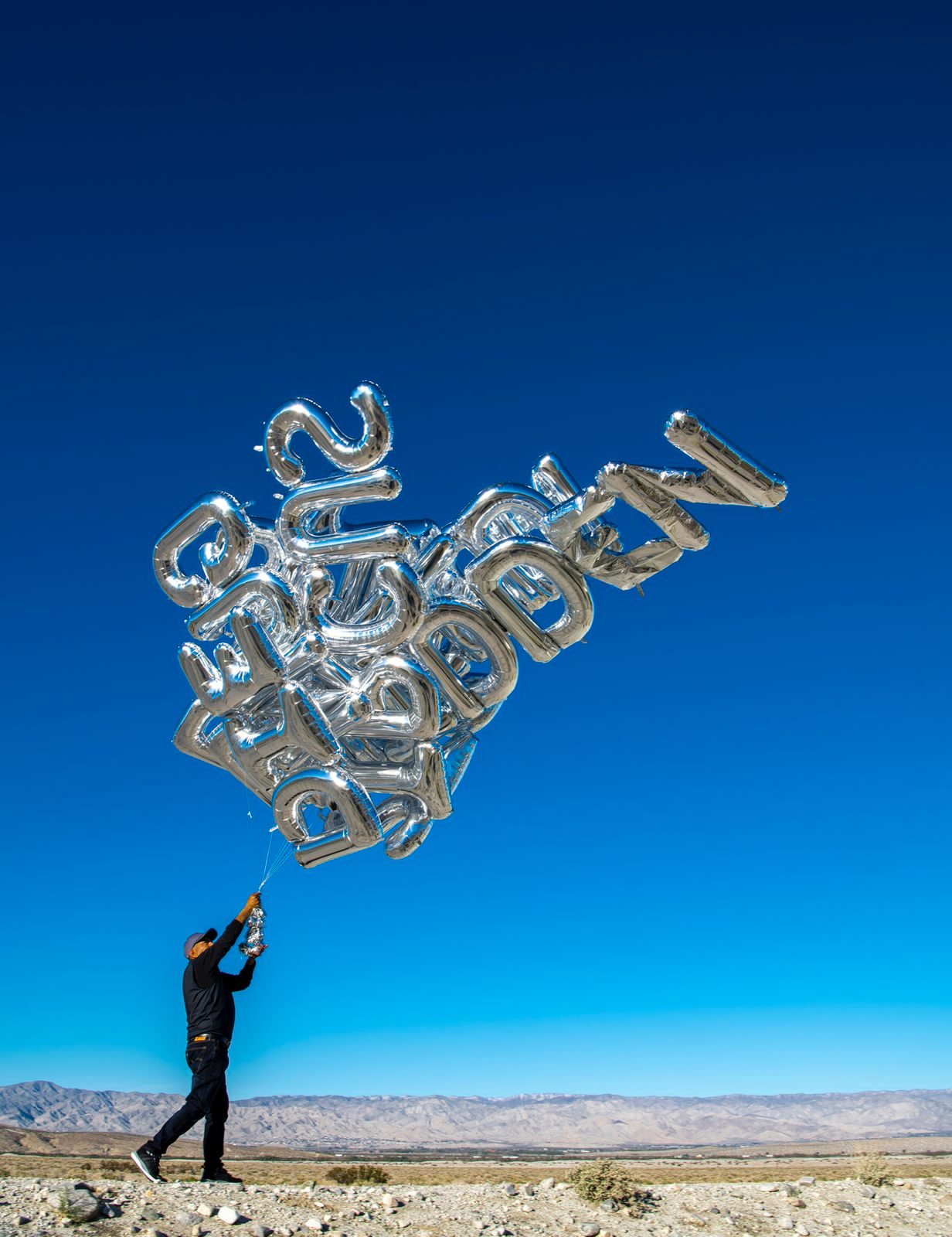
In the same vein, but looking towards the past, as a Cahuilla tribe leader, Gerald Clarke’s work often revolves around political urgent matters concerned with the natural and cultural history of the Native Americans in the Coachella Valley. Immersion, his take for this edition of Desert X, is both a haunting and powerful installation. The piece consists of a life-size board trivia game in the shape of a circle made out of basket weaving, a tradition from the Cahuilla people. Yet his questions are more than a game, they invite the spectators to challenge their knowledge structures and narratives, as Clarke’s questions are based on ancestral tribes, colonial history and indigenous practices. Clarke challenges viewers to consider the ways in which these groups have been historically marginalized and excluded from dominant narratives. It offers a powerful commentary on the intersection of identity, history, and the environment, that leaves any spectator feeling absolutely clueless about the past.
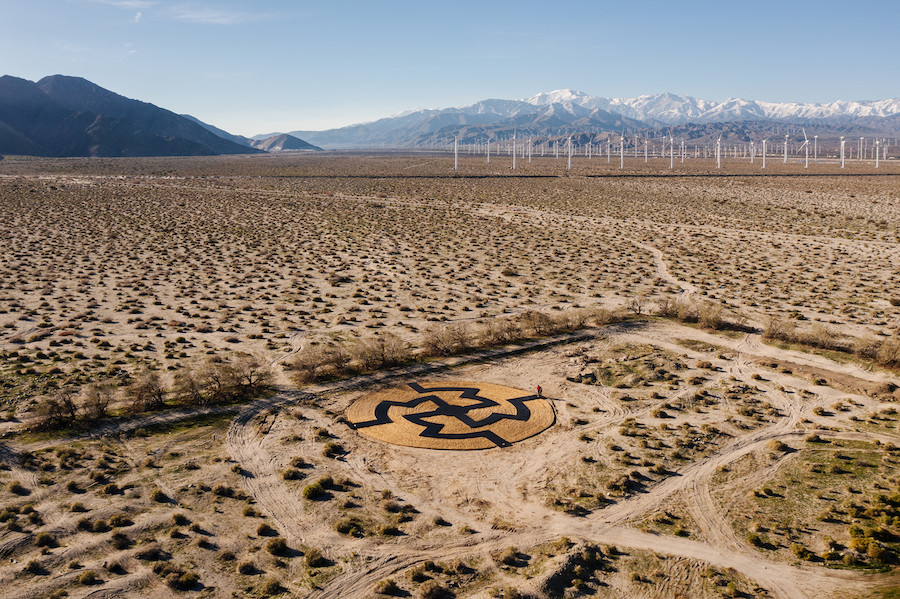
Finally, both Torkwase Dyson’s Liquid a place and Lauren Bon and Metabolic Studio’ The Smallest
Sea With the Largest Heart explore the narratives of the desert through the poetics of the water. The first one, creates a monumental sculpture that connects the relationship between the body water and the desert water as a mnemonic device. As if the memory of the water had the potential to connect the humans and the landscape with their own history. Yet her structure also talks about the bodies within the landscape, architecture and how we could make cities more liveable. The latter, reminds us how the desert was once sea exploring the relationship between water and desert ecologies.. Taking inspiration from the blue whale and plants, which metabolize sunlight into energy, her work reflects on the enormous world-wide water shortage. Her sculpture—in the shape of a blue whale heart—located in a pool, is capable of metabolizing and creating energy to clean the water of the pool. Her sophisticated and poetic mechanism reminds us of the possibility to transform the environment around us.
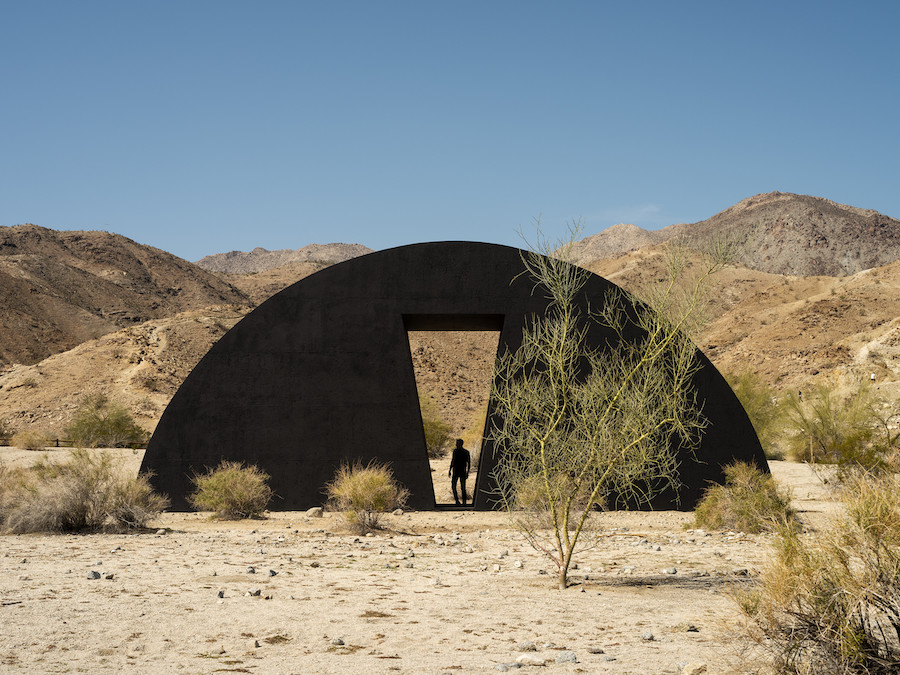
This edition of DesertX reminds us of the potentiality of navigating global problems through our local environments. The desert acts as its own world where “artists create instruments of self-awareness that make visible the forces that we exert on the world: how we design our environments, how we live, the messages we send that reinforce systems that might or might not be beneficial for us” as Diana Campell, appoints in an interview.
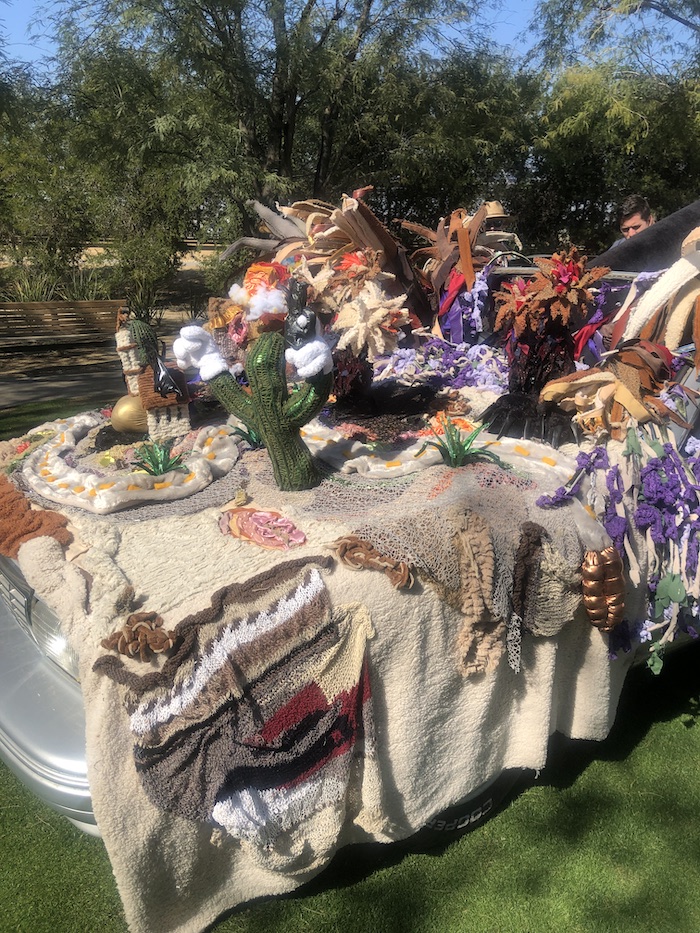
23.03.2024
Opinion Cartografía sentimental de la brutalización en curso Argentina, Latinoamérica
Duen Sacchi
22.03.2024
Marginalia
(Español) La Revuelta
08.03.2024
Opinion
María Galindo
Comments
There are no coments available.